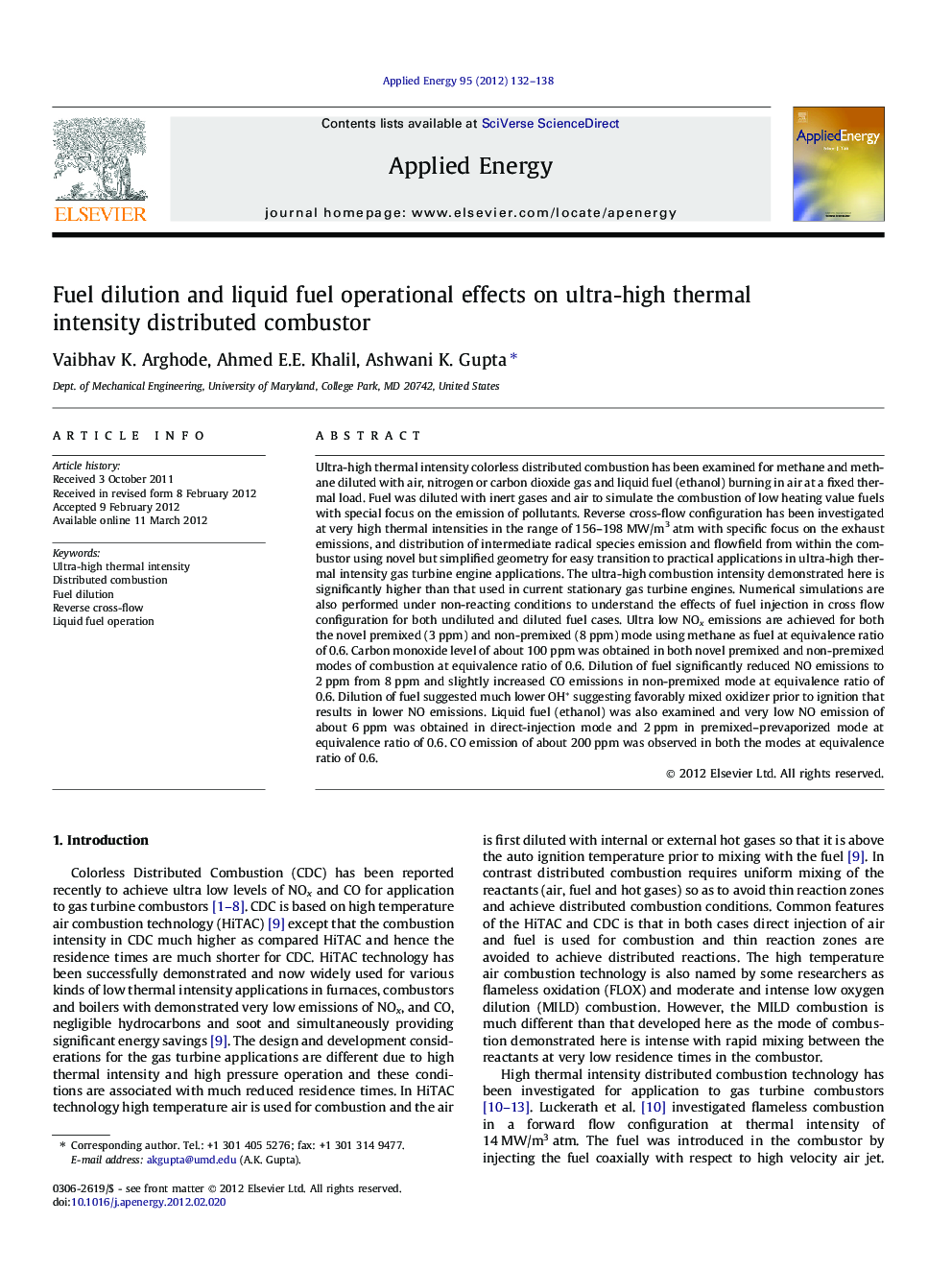| کد مقاله | کد نشریه | سال انتشار | مقاله انگلیسی | نسخه تمام متن |
|---|---|---|---|---|
| 243682 | 501933 | 2012 | 7 صفحه PDF | دانلود رایگان |

Ultra-high thermal intensity colorless distributed combustion has been examined for methane and methane diluted with air, nitrogen or carbon dioxide gas and liquid fuel (ethanol) burning in air at a fixed thermal load. Fuel was diluted with inert gases and air to simulate the combustion of low heating value fuels with special focus on the emission of pollutants. Reverse cross-flow configuration has been investigated at very high thermal intensities in the range of 156–198 MW/m3 atm with specific focus on the exhaust emissions, and distribution of intermediate radical species emission and flowfield from within the combustor using novel but simplified geometry for easy transition to practical applications in ultra-high thermal intensity gas turbine engine applications. The ultra-high combustion intensity demonstrated here is significantly higher than that used in current stationary gas turbine engines. Numerical simulations are also performed under non-reacting conditions to understand the effects of fuel injection in cross flow configuration for both undiluted and diluted fuel cases. Ultra low NOx emissions are achieved for both the novel premixed (3 ppm) and non-premixed (8 ppm) mode using methane as fuel at equivalence ratio of 0.6. Carbon monoxide level of about 100 ppm was obtained in both novel premixed and non-premixed modes of combustion at equivalence ratio of 0.6. Dilution of fuel significantly reduced NO emissions to 2 ppm from 8 ppm and slightly increased CO emissions in non-premixed mode at equivalence ratio of 0.6. Dilution of fuel suggested much lower OH* suggesting favorably mixed oxidizer prior to ignition that results in lower NO emissions. Liquid fuel (ethanol) was also examined and very low NO emission of about 6 ppm was obtained in direct-injection mode and 2 ppm in premixed–prevaporized mode at equivalence ratio of 0.6. CO emission of about 200 ppm was observed in both the modes at equivalence ratio of 0.6.
► Demonstrated CDC flames up to ultra-high thermal intensity of 198 MW/m3 atm.
► NO emission of 8ppm for non-premixed and 3 ppm for premixed methane.
► Significant reduction in NO to 2 ppm by diluting methane with inert gases and air.
► NO emission of 2 ppm with novel prevaporized mode using ethanol.
► NO emission of 6 ppm with novel direct injection mode using ethanol.
Journal: Applied Energy - Volume 95, July 2012, Pages 132–138